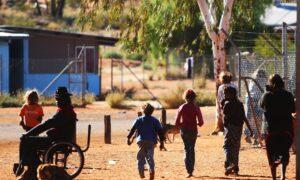About 24,600 Indigenous children were subject to care and protection orders as of June 2022, new figures from the Australian Institute of Health and Wellbeing (AIHW) show.
That equates to 72 out of every 1,000, up from 62 per 1,000 four years earlier. Nearly a third of those affected are aged between 10 and 14.
Aboriginal children make up just 5 percent of all children in Australia, but they account for almost half of those in the child protection system.
Indigenous children who were placed with relatives for out-of-home care rose from 50 percent in 2017 to 54 percent in 2022.
In total, 19,000 were in out-of-home care, though not all of these were able to be placed with family. Of that number, 14,000 were classed as having been in long-term care, meaning they had been separated from their primary family unit for two years or more.
Of those with at least one sibling in out-of-home care, 70 percent were able to be placed with at least one of their brothers or sisters.
These figures mean the country is not on track to reach the target set in the “Closing the Gap” strategy, which aims to reduce the rate of Indigenous children in out-of-home care by 45 percent by 2031.
Long Way From Closing the Gap
Prime Minister Anthony Albanese used his Closing the Gap speech in February to announce the establishment of a national commissioner for Aboriginal and Torres Strait Islander children. Part of its focus would be on the rates of Indigenous children in out-of-home care.“What it all comes down to is strengthening families and keeping children safe,” he said in Parliament, saying the target was “guided every step of the way by the evidence.”
In October last year, a report by the South Australian Commissioner for Aboriginal Children and Young People, April Lawrie, found Aboriginal children were increasingly being removed from their families, despite commitments from governments to reduce family separation.
If current trends continue, the report found that “the number of Aboriginal children living in out-of-home care will increase by a further 50 percent over the next decade.”
Housing Disadvantage
United Nations Special Rapporteur on the Rights of Indigenous Peoples, Victoria Tauli-Corpuz, recently visited Western Australia, which has the highest over-representation of Indigenous children in the system, as well as the Northern Territory, Queensland, the Australian Capital Territory, Victoria, and New South Wales.Lack of access to safe and stable housing can impact a family’s ability to care for their children. Data from AIHW and the National Indigenous Australians Agency has found Indigenous people are severely disadvantaged in the housing market.
They are 11 times more likely to live in social housing, 10 times more likely to access homelessness services, and four times more likely to reside in overcrowded homes.






